Carburizing Process RX Gas Generator Endothermic Gas Troubleshooting Tools
|
|
Carburizing Process RX Gas Generator Endothermic Gas Troubleshooting Tools
Recent innovations in fuel-injection and gas analysis equipment have provided the modern heat treatment professional with a number of useful tools to aid in troubleshooting gas generator problems. These tools can help to quickly identify any quality related issue within the gas generation process and provide the most direct course of action to prevent or resolve any issue. Endothermic Gas Quality Troubleshooting Tools
1. Air/Gas Ratio (Historical Data if possible) 2. Oxygen Probe Data 3. Dew Point Analyzer 4. Three Gas Analyzer
Air/Gas Ratio
The air/gas ratio is the leading indicator of any change inside the endothermic gas generation process. Typically, a higher air/gas ratio will produce endothermic gas with a higher dew point. However, the air/gas ratio can change considerably to maintain the same dew point for a number of reasons as detailed below. Therefore, it is important to understand the normal ratio “range” associated with a particular generator so that it is easier to identify actual problems before they become major issues. The air/gas ratio is simply a description of the recipe being used in the gas reaction. This ratio is typically displayed prominently when the generator has a fuel-injection ratio control system. However, if the generator utilizes a carburetor/trim mixing package, the air/gas ratio must be calculated by looking at the mechanical flow meters on the generator and using the following equation:
Air/Gas Ratio Calculation (Air Flow + Trim Air Flow) / (Gas Flow + Trim Gas Flow) = Air/Gas Ratio Typical Air/Gas Ratio (40’F Dew Point) Air / Natural Gas ............ 2.60 - 2.80 Air / Propane Gas ........... 7.60 - 7.80
If the dew point control system utilizes a trim gas solenoid that “pulses” additional trim gas into the reaction gas mixture using a time proportional scheme an additional calculation will be required to find the actual trim gas flow required in the Air/Gas Ratio equation above: Time Proportional Trim Gas Flow Calculation (same calculation can be used for trim air if needed) (% Output on DP Controller) x (Trim Flow when Solenoid Open) = Trim Gas Flow Rate It may seem obvious, but there are still a number of generators manufactured today that do not provide flow meters for all the gasses on the reaction mixing system. It should be understood that this is a serious disadvantage when trying to predict and troubleshoot gas generation problems. Further, a fuel injection system with true ratio control provides the easiest and most accurate way to document the actual air/gas ratio at any moment and does not require any manual calculations. In addition, modern controllers typically include a paperless chart recorder that will log this ratio for reference in generator troubleshooting.
Generator Startup after Weekend Shutdown or Longer
During the first 30 minutes of a generator startup the dew point will remain high until all the residual oxygen within the ceramic catalyst has been reacted and the actual endothermic reaction begins to occur. It is recommended that the operator resist the urge to manually lower the air/gas ratio much lower than the last known air/gas ratio to produced endothermic gas at the desired dew point. After approximately 30 minutes, the primary endothermic gas reaction will begin and the dew point will drop dramatically to a stable value and continue to decrease slowly for the next 15- 20 minutes.
In the event the dew point does not fall to the desired dew point after these events have occurred, then an air/gas ratio adjustment should be made to bring the dew point down manually. Once the dew point has fallen below the desired setpoint, the dew point controller should automatically begin adjusting the air/gas ratio to maintain the desired endothermic gas dew point.
Normal Reasons for Air/Gas Ratio Swing
The air/gas ratio can change significantly from month-to-month just to produce endothermic gas of the same dew point quality. These common ratio changes are actually a normal response to conditions that are not controlled of by the gas generation process.
Reasons for Normal Air/Gas Ratio Swing
“Peak Shaving” in Natural Gas Supply........Large Influence (8 - 15%) Ambient Air Dew Point Changes ................Small Influence (1 - 5%) New Catalyst “Seasoning”...........................Small Influence (1 - 5%) The most obvious example of a “normal ratio swing” is between the summer and winter months. Over five years of data, it has been documented that a 10-12% higher air/gas ratio is required to produce endothermic gas of the same quality during the winter months. The primary explanation for this winter swing is due to “peak shaving” in the gas supply and dryer than normal ambient air conditions. Conversely, during the summer months, the ambient dew point can be significantly higher and therefore, a lower air/gas is needed to produce endothermic gas with the same dew point.
Another normal ratio swing occurs when new catalyst is installed. The initial air/gas ratio required will be slightly lower than normal and gradually rise to a normal operating range during the first 2 weeks of operation. During this time, the dew point of the endothermic gas will remain constant. The primary cause of this initial drift is presumed to be that there is additional oxygen resident within the inner cavities of the ceramic catalyst. This oxygen is slowly reacting with the air-gas mixture in the retort. Therefore, a small amount of additional gas is required until the catalyst has been completely “seasoned.”
It is important to note that during these “Normal” occurrences, the endothermic gas quality is not greatly affected. However, large “Peak Shaving” events can cause a significant change to the amount of Carbon Monoxide (%CO) in the endothermic gas. In this case, the “CO Factor” might need to be changed in the carbon controller at the furnace. Of course, this should be done after a proper shim test of the furnace atmosphere.
|
| Product Tags: Endothermic Gas Generator Gas Generator Plant RX Gas Generator Carburizing |
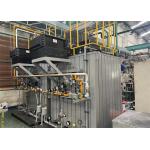
|
100 Nm3/H Heat Absorbing RX Gas Generator Reliable And Environmentally Friendly |
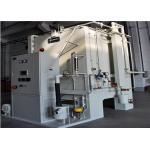
|
50 - 1000 Nm3/H RX Gas Generator For Wire Steel Pipe |
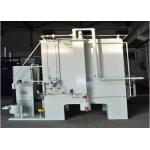
|
Carburizing Heat Treatment RX Gas Generator With Capacity 40 - 1600 Nm3/H |
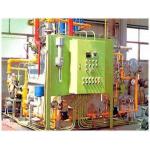
|
Natural RX-G RX Gas Generator Unit / Endothermic Gas Generator Plant |
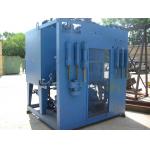
|
60 Nm3/h Reliable Endothermic RX Gas Generator Equipment Eco Friendly |
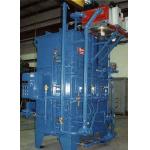
|
Exothermic - Endothermic Gas Generators Produce Atmosphere Gas For Furnace |

